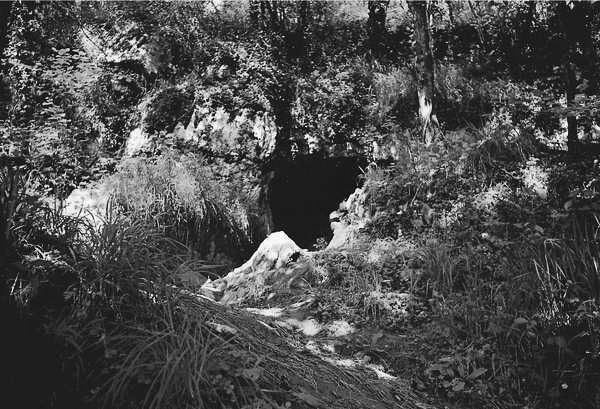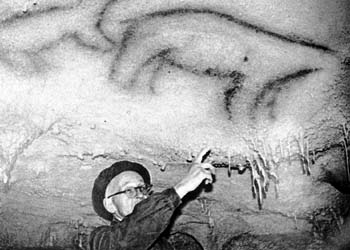A little history
Ekain Cave was discovered by two members of the Antxieta taldea Club, Andoni Albizuri and Rafael Rezábal, during speleological and archaeological exploration. On 1 June 1969, they found the entrance of the cave, which from that day took the name of the hill in which it is sited. However, it was not until Sunday 8 June that Rezábal noticed that a hole, partly blocked with stones, led off at the back of the entrance and crawled a few metres towards the inner cave.

Haitzuloaren lehen zatia esploratu ondoren, eta hormetan koloragarriak hautematean, Rezabalek zaldien panela aurkitu zuen (Zaldei). Gainerako taldekideekin hitz egin ondoren, arratsalde hartan eman zioten aurkikuntzaren berri José Miguel de Barandiaráni. Egun gutxira, José Miguel de Barandiarán eta Jesús Altuna azterketa arkeologikoak egiten hasi ziren, eta indusketa lan txiki bat ere egin zuten. Urte berean, labar arteari buruzko lehen lana argitaratu zuten. With great difficulty they crawled for about 20 metres until they were able to stand up.
They explored the first passages and, after noticing pigment on the walls, Rezábal discovered the panel of horses (Zaldei). After talking to the other club members, that same afternoon they informed José Miguel de Barandiarán of their discovery. A few days later, he began the archaeological study together with Jesús Altuna and carried out a small excavation. That same year, they published their first report on the rock art.

The history of archaeological research in Ekain Cave has continued until the present time. The archaeological excavation in the cave entrance was performed from 1969 to 1975 in the course of six seasons of fieldwork. The preliminary results were published in 1977 and more fully in 1984 by Jesús Altuna and José María Merino. In 1974, Ignacio Barandiarán published a study about the artistic particularities of the horses. In 1978, Jesús Altuna and Juan María Apellániz brought out a large monograph about the Palaeolithic rock art, in which they increased the number of figures that were known with new discoveries. This study was enlarged by Jesús Altuna in 1997. A new figure of a bison within the panel of horses was reported two years later. Altuna conducted further archaeological excavations in the entrance from 2008 to 2011 and new red paintings were published in 2008.
Near the cave, Ekainberri was opened in 2008 to encourage the social use of the site. This consists of a replica of the cave together with an exhibition in order to inform about the archaeology of the cave and Palaeolithic art in the Basque Country. A significant landmark in its social perception was the listing of Ekain Cave as a UNESCO World Heritage Site in 2008.
